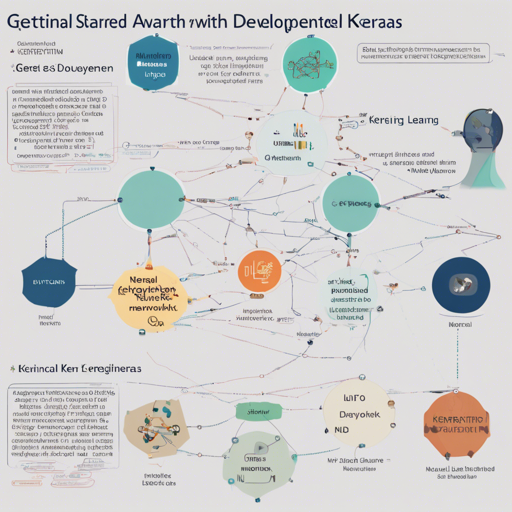Keras is an open-source software library that allows users to easily build and train deep learning models. While there are many aspects to consider when working with Keras, this article will provide an overview of its model description, intended uses, limitations, and related metrics for an effective journey into the realm of deep learning.
Model Description
When developing a model using Keras, it’s essential to understand the different components that constitute a model architecture. Keras simplifies model creation with various building blocks like layers, optimizers, and activation functions. This modular approach enables even those with minimal coding experience to create robust models.
Intended Uses & Limitations
The Keras library is intended primarily for enabling fast experimentation and implementation of neural networks. Here are a few specific areas where Keras shines:
- Computer Vision: Image classification, object detection, and segmentation tasks.
- Natural Language Processing: Text generation, sentiment analysis, and translation.
- Time Series Analysis: Forecasting and anomaly detection in time-dependent data.
However, Keras does have limitations:
- Flexibility: While it supports rapid prototyping, Keras may lack some lower-level functionalities that are available in other frameworks.
- Performance for Large Models: It might not be as performant as some of the other deep learning libraries when implementing highly complex models.
Training and Evaluation Data
Successful training is contingent on the quality and structure of your data. Curating a robust dataset is vital for model performance. Generally, you may want to split your dataset into three main parts:
- Training Set: Used to train the model.
- Validation Set: Helps in fine-tuning the model and hyperparameters.
- Test Set: Employed to evaluate the model’s performance on unseen data.
Training Metrics
Measuring the effectiveness of your model during training and evaluation is crucial. Training metrics can include:
- Accuracy: The proportion of true results (both true positives and true negatives).
- Loss: A measure of how well the model’s predicted values align with the actual values.
- AUC-ROC: The area under the receiver operating characteristic curve, helping in binary classification tasks.
Monitoring these metrics allows you to observe the model’s learning process and make necessary adjustments to enhance performance.
Troubleshooting Tips
As you embark on your Keras journey, you may encounter hurdles. Here are some troubleshooting strategies:
- Ensure your dataset is correctly pre-processed and cleaned.
- Monitor your training metrics regularly to adjust hyperparameters as needed.
- If you’re facing overfitting, consider implementing dropout layers or using regularization techniques.
- Use verbose logging to trace errors during model training.
- Experiment with different optimizers and learning rates for better results.
For more insights, updates, or to collaborate on AI development projects, stay connected with fxis.ai.
Conclusion
At fxis.ai, we believe that such advancements are crucial for the future of AI, as they enable more comprehensive and effective solutions. Our team is continually exploring new methodologies to push the envelope in artificial intelligence, ensuring that our clients benefit from the latest technological innovations.

